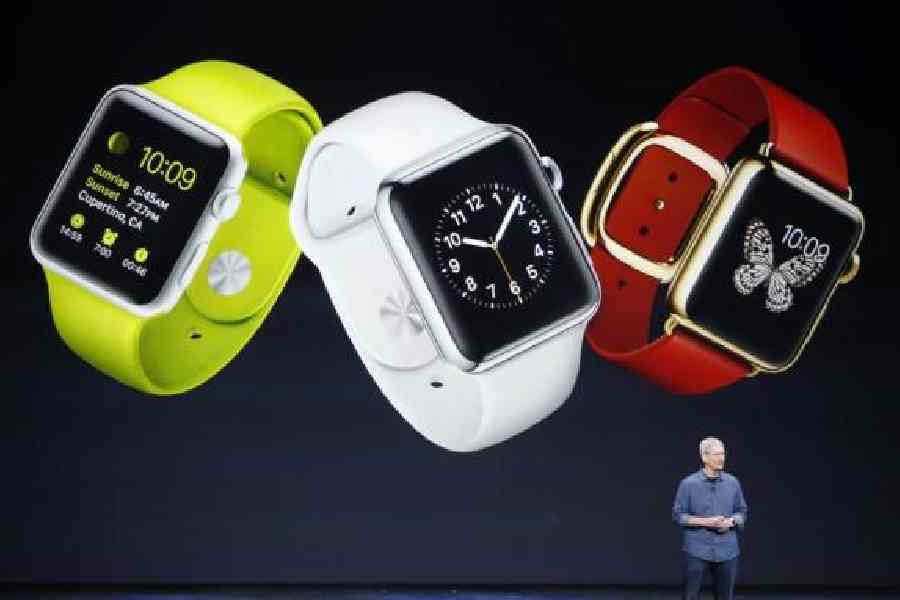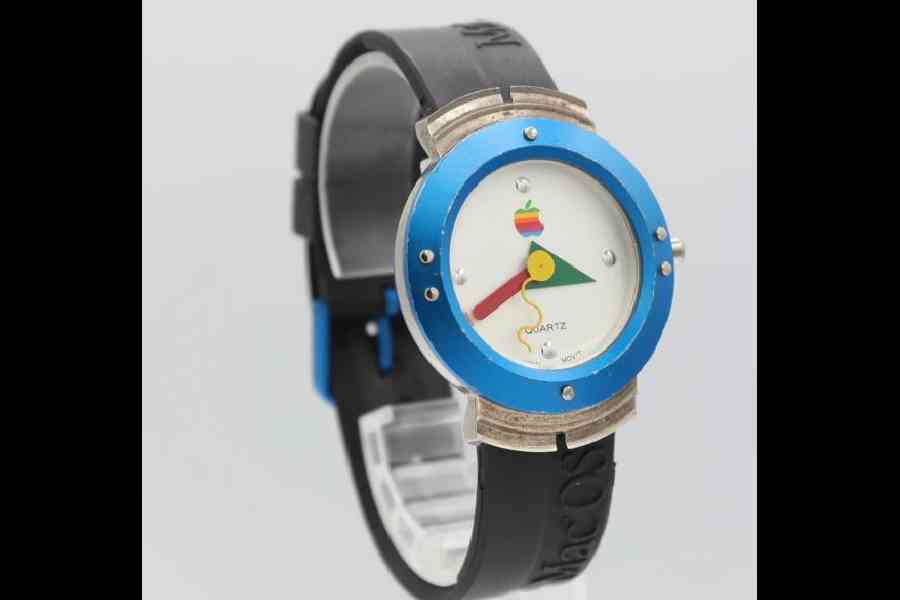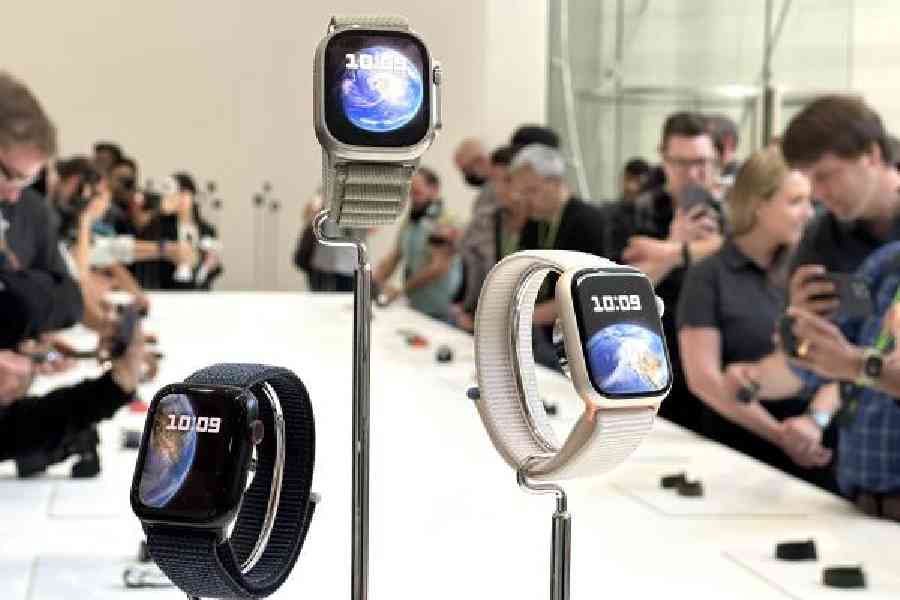Fashion folks love the new. That is what Apple delivered to stores on April 24, 2015. The company released the Apple Watch. Ten years later, the wrist computer remains as much a fashion statement as a device that improves quality of life. In fact, the true potential of Apple Watch can be gauged today more than ever before. Here’s how the symphony continues to unfold.
Warm-up moment
In 2013, the global market for watches came to about $62 billion, with purchases divided fairly evenly between budget (less than $150), mid-grade ($150-$1,000) and high-end (greater than $1,000). The base version of the Apple Watch came at $349, making it a competitive option for anybody looking for a smartwatch or as simple as anyone shopping for a watch.
It was Apple’s first new product in five years… the first one developed after Steve Jobs died. The team at Apple had to think of the problems the wrist-mounted technology could solve over time. And they knew the interface would determine the fate of the device.
It was also an important moment for Apple’s then chief design officer Jony Ive, who shared a strong rapport with Jobs. The dings and buzzes of phones were ruining our lives. What could be done to offer a break from nagging notifications? At the same time, it needed to make us stay connected with technology?
Ultimately, in 2014 the company announced the watch and the next year, it made it to the store.

Beyonce sports a gold band Apple Watch in 2015
If Beyonce can…
What was the first Apple Watch like? It felt like a computer on the wrist and not just an extension of the phone.
There were three models — the Apple Watch Sport, Apple Watch and Apple Watch Edition. The Sport model was the most affordable at $349 and featured an aluminium design in four colours. The pricer Apple Watch was $549, made from stainless steel, available in space grey or silver. This model also had a ceramic backside and a sapphire glass display, which was more scratch-resistant than the Sport model.
And there was the Apple Watch Edition. Made from 18-carat yellow or rose gold, it was the priciest Apple Watch ever, starting at $10,000. It was available in limited quantities at select Apple Store locations and came with its own unique buying experience. Apple wanted to show that a luxury computer can be anything, even the Apple Watch.
The pitch was simple — fitness meets communication. What excited users were the health features. Over the years, Apple added more sensors for health and wellness tracking. It soon became the guardian on the wrist, warning you of health issues.
The standard Apple Watch models were sold using five to 10-minute demo sessions at tables throughout the company’s stores, but the exclusive edition models came with a private one-on-one demo session.

Apple CEO Tim Cook speaks about the Apple Watch during an Apple event at the Flint Centre in Cupertino in 2014. Picture: Reuters
It wasn’t entirely clear why Apple decided to release such an expensive model of Apple Watch, but there were rumours that the $10,000 model helped the entire product line appear more luxurious and desirable, especially since high-profile celebrities like Beyonce were seen wearing it.
In terms of technology, the original Apple Watch models were impressive. They featured a digital crown to scroll through lists and to zoom in or out. And a pressure-sensitive display that enabled force touch, which allowed for additional functionality by pressing on the screen.
The built-in heart rate monitor enabled detailed fitness tracking, which was utilised with the activity and workout apps.
Apple created a new custom chipset for the Apple Watch, called the S1. It is said that Apple sold 12 million units in 2015. But this was only the beginning. As competitors like Fitbit and Samsung tried to catch up, Apple was already releasing the next-generation Apple Watch in 2016.
The years roll by
Then came two new models. The Series 1, which was identical to the previous Apple Watch, except the upgraded S1P chip. And the Series 2, which cost $100 more at upwards of $369, but received many new features like built-in GPS, twice the display brightness, water resistance up to 50 metres, and a new workout tracker for swimming.

In 1995, Apple released a watch, which was a promotional item that you got when you bought Mac OS 7.5
The more affordable Series 1 was only available in aluminium, while the Series 2 was available in aluminium, stainless steel and a new white ceramic.
Customers wanted a significant change to the device, and 2017 delivered just that. In fall, the Apple Watch Series 3 was released and featured crucial improvements, like warning us of high heart rates. Its S3 chip worked faster, making it much less frustrating to navigate different apps. There was also a cellular model customers could buy for a higher price, which would always be connected to your cellular network even if you left your phone behind. That meant you could make and answer calls, send and receive texts, check email, and even stream Apple Music anywhere, anytime, right from your wrist.
With Apple Watch sales in 2017 reaching a record-breaking 18 million units, more and more people were buying the device.
The first major redesign to the Apple Watch came the following year with the Series 4 in 2018. It was the year we got auto workout detection, so you didn’t have to log anything manually. It had double the performance of the previous S3, a larger display with smaller bezels, and rounded corners like the iPhone X. The big feature was the new electrical heart sensor that enabled ECG readings, which was a first in any consumer device.
Series 5 warned us if things around were a bit too noisy. It also brought an alway-on display. A big update came in September 2020, when Apple introduced the Series 6 and the new Apple Watch SE. This was also the series that added the blood oxygen sensor.
Series 7 added a mindfulness app, and with Series 8, in 2022, some of us started looking at the temperature sensor. There was also crash detection. It is also the year we got the Apple Watch Ultra for the more adventurous people. Series 9 started changing how we interact with the Watch using the Double Tap gesture.
The current Series 10 keeps leaning deeper into health, with features like sleep apnea notification and more fitness data trends with the Vitals app.
Where next?
In 2019, CEO Tim Cook was interviewed by CNBC. He had something interesting to say: “I believe, if you zoom out into the future, and you look back, and you ask the question, ‘What was Apple’s greatest contribution to mankind?’ it will be about health.”
The pandemic changed our relationship with the smartwatch. It had us all working from home, and we couldn’t afford to miss work messages while doing household chores. The Apple Watch became an integral part of our lives.
What makes the Watch special? It’s durable — you can take a tumble while hiking. It is also dust resistant. It can be your guide while driving if you are using Apple Maps. You can take calls from it if you can’t reach the phone on time. It is helping many to take the eye off phones. There is a movement among parents to not give phones to kids at a young age. They are giving children Apple Watches as an emergency communication tool.
Apple continues to push into the health sector. Rumours suggest that the next big feature could be blood glucose tracking.
Mathures Paul
Our favourite features
Life saver: There is fall detection and crash detection that can save lives.
Heart rate monitoring: It points you in the right direction and may offer early signs of atrial fibrillation.
Decibel tracking: It tells you if you are in a loud environment for a long time.
Backtrack feature: It drops a pin on the map to allow you to easily trace your steps if you are in a low-connectivity area.
Fitness: The most accurate health tracking device — workout to step count. You can set exercise goals.
Notifications: You have the notification on the wrist, and that way, you can ignore messages that don’t need your attention.
Sleep tracking: Getting a good night’s sleep is important. Wearing the Apple Watch to bed helps.
Family members: Instead of a phone, give the kid an Apple Watch to stay in touch. You can keep track of them and know if they are in a sticky situation. There is a ‘schooltime schedule’.










